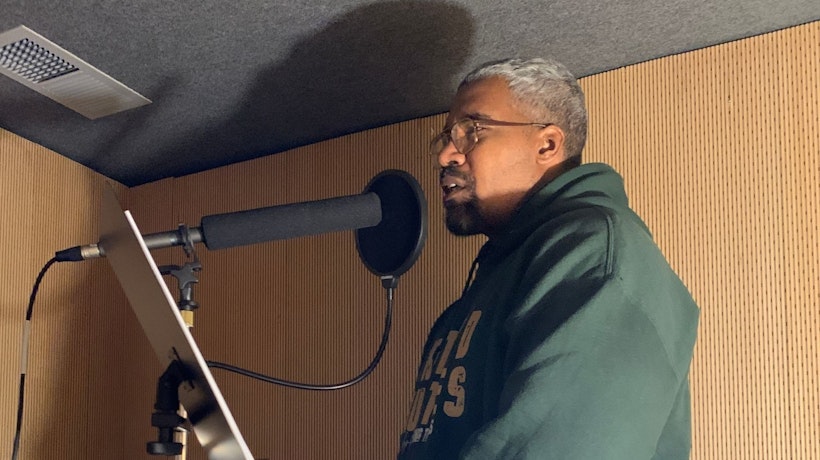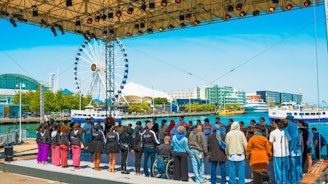
Through a cozy, lamplit room and small table with a microphone, StoryCorps collected thousands of intimate conversations between Chicagoans from all walks of life, creating a record of our city and its people, in its time, in its own words.
Founded in 2003 by radio documentarian and MacArthur Fellow Dave Isay, StoryCorps invites pairs of participants—typically friends and loved ones—to record meaningful, 40-minute conversations about their lives, and the recordings are archived for posterity at the Library of Congress. It opened its Chicago StoryBooth, with support from the Driehaus Foundation, at the Chicago Cultural Center in 2013.
For nearly a decade, the Chicago StoryBooth captured these local voices—sometimes underrepresented by traditional media outlets—and amplified them through regular broadcasts on NPR and WBEZ.
But that particular setup became challenging under COVID-19, when in-person interviewing was suspended, and StoryCorps wrapped up these local operations in 2021.
Rather than see the StoryBooth put into storage, the Invisible Institute, a multimedia investigative team and fellow Driehaus Foundation grantee, proposed a different second chapter: to move the booth to Hyde Park and continue to use it the service of Chicago storytelling.
The Invisible Institute audio series "Somebody," which was nominated for a Pulitzer Prize last year, had their producers recording out of sometimes makeshift setups. The StoryBooth, they recognized, would be ideal for their next project and for ongoing audio work out of their home base at Hyde Park's Experimental Station.
"StoryCorps creates beautiful, three-minute pieces, lovingly crafted, and this was an opportunity to [use it to] do something richer, longer, and over a greater period of time," says Bill Healy, a former StoryCorps editor who now works as an audio journalist with the Invisible Institute.
To the team's delight, StoryCorps agreed to the Invisible Institute's plan to adopt the booth, with one condition: They had to move it themselves.
As staff recount, this turned out to be much easier imagined than achieved. The booth was intricately built, with weighty floor and ceiling panels, internal latticework, and of course, no assembly manual. Founder Jamie Kalven enlisted special assistants, including Paul Bluestone, the original fabricator who could direct reassembly, and Ken Dunn, a creative reuse expert with the nonprofit Resource Center (another Driehaus Foundation grantee for much of the 1990s), to help with the move.
Balancing the heavy parts, navigating narrow alleys, and taking care to not damage the Cultural Center's floors were "adventures," Kalven says. The StoryBooth's journey even detoured briefly into the emergency room, when a wobbling, eight-foot metal panel scraped an ankle and required seven or eight stitches.
Today, the StoryBooth plays an invisible actor in a new podcast narrated by Yohance Lacour and set for release later this year. The new series will tell the story of Lenard Clark, a Black 13-year-old who was beaten into a coma while riding his bike through the Bridgeport neighborhood in 1997 and the rippling effects of the incident on the present day.
"[The booth] is built to create a mood of reflectiveness, and you feel it when you're in that space," Healy says. "It's been a gamechanger."
The Invisible Institute intends to use the booth for ongoing projects, and to make it available as a community resource for other storytellers and audio documentarians on the South Side.
Which means that after more than 4,000 narratives collected, the booth's story in Chicago will get a deserving sequel.


